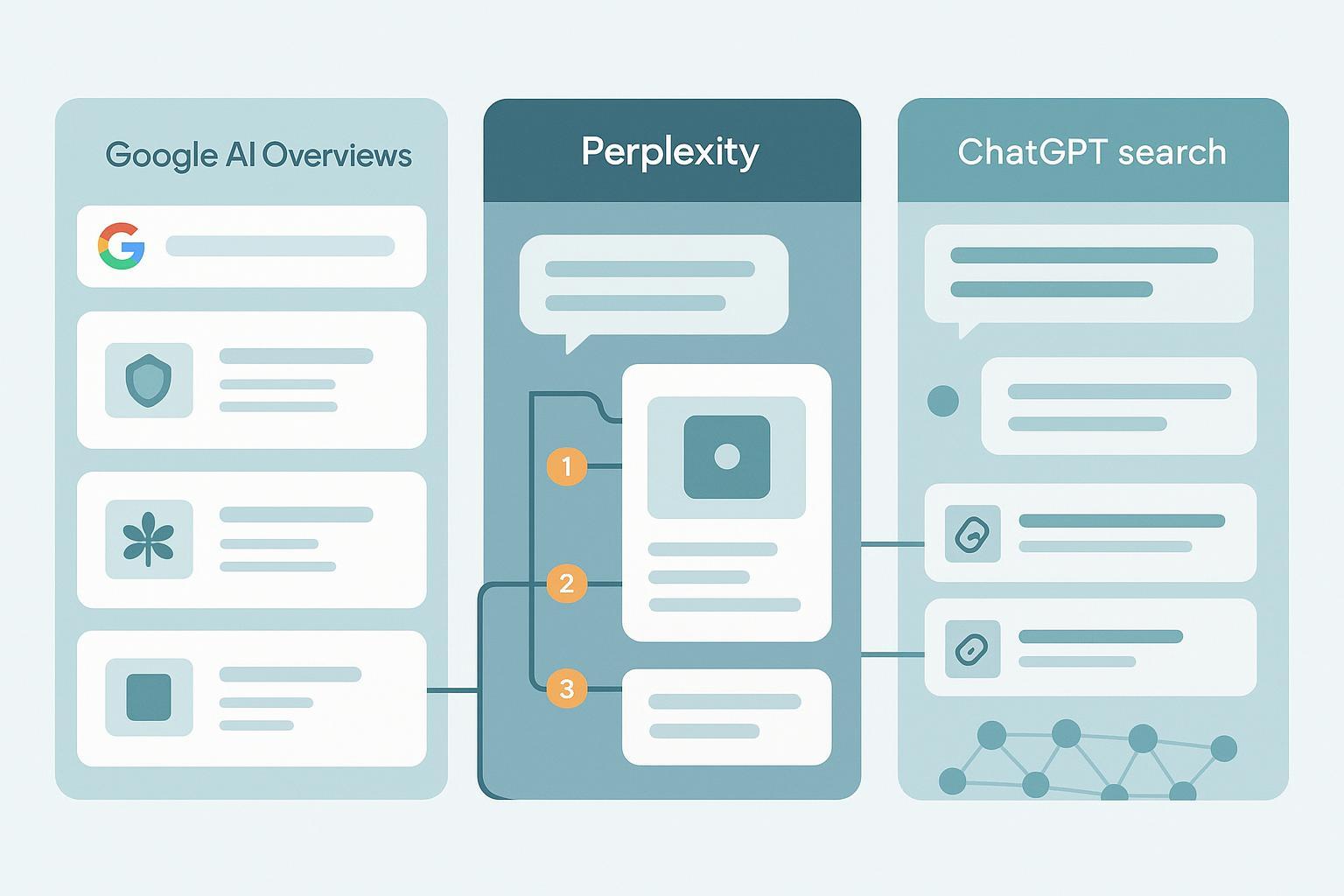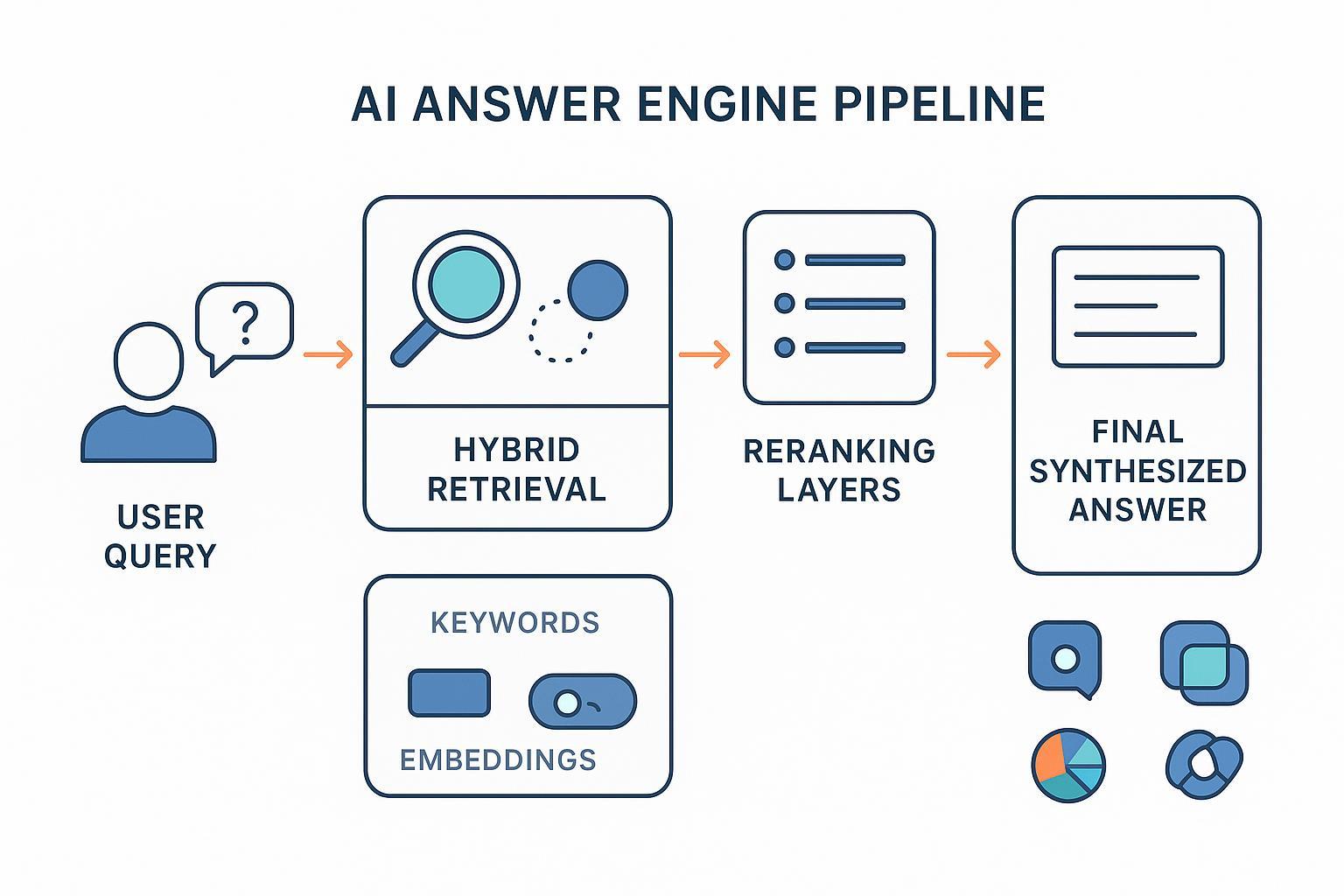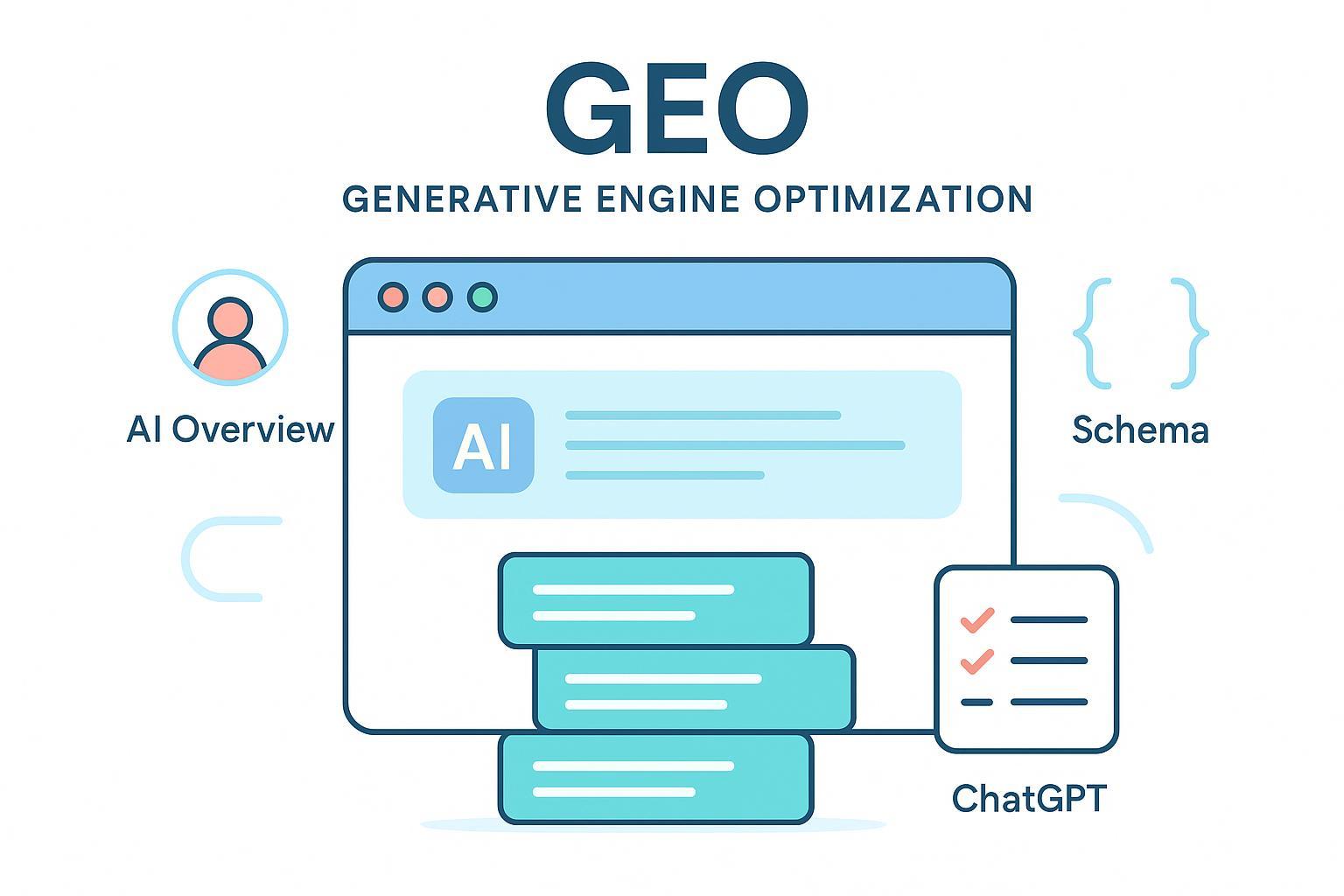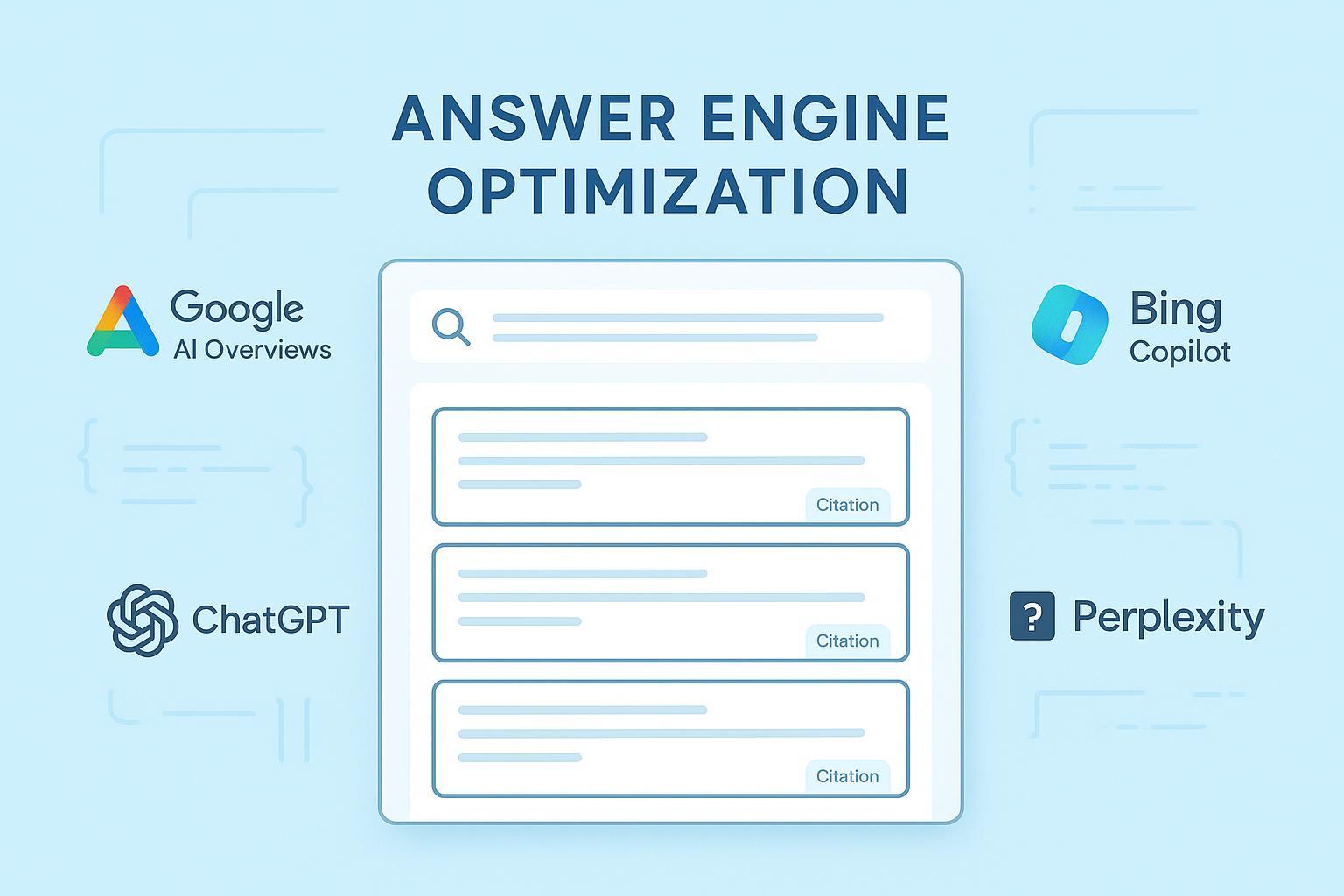Generative Engine Optimization (GEO) in 2025: Future Beyond SEO
Discover how GEO reshapes search in 2025—AI Overviews, Bing Copilot, Perplexity, evidence-backed tactics. Future-proof your strategy: read now!

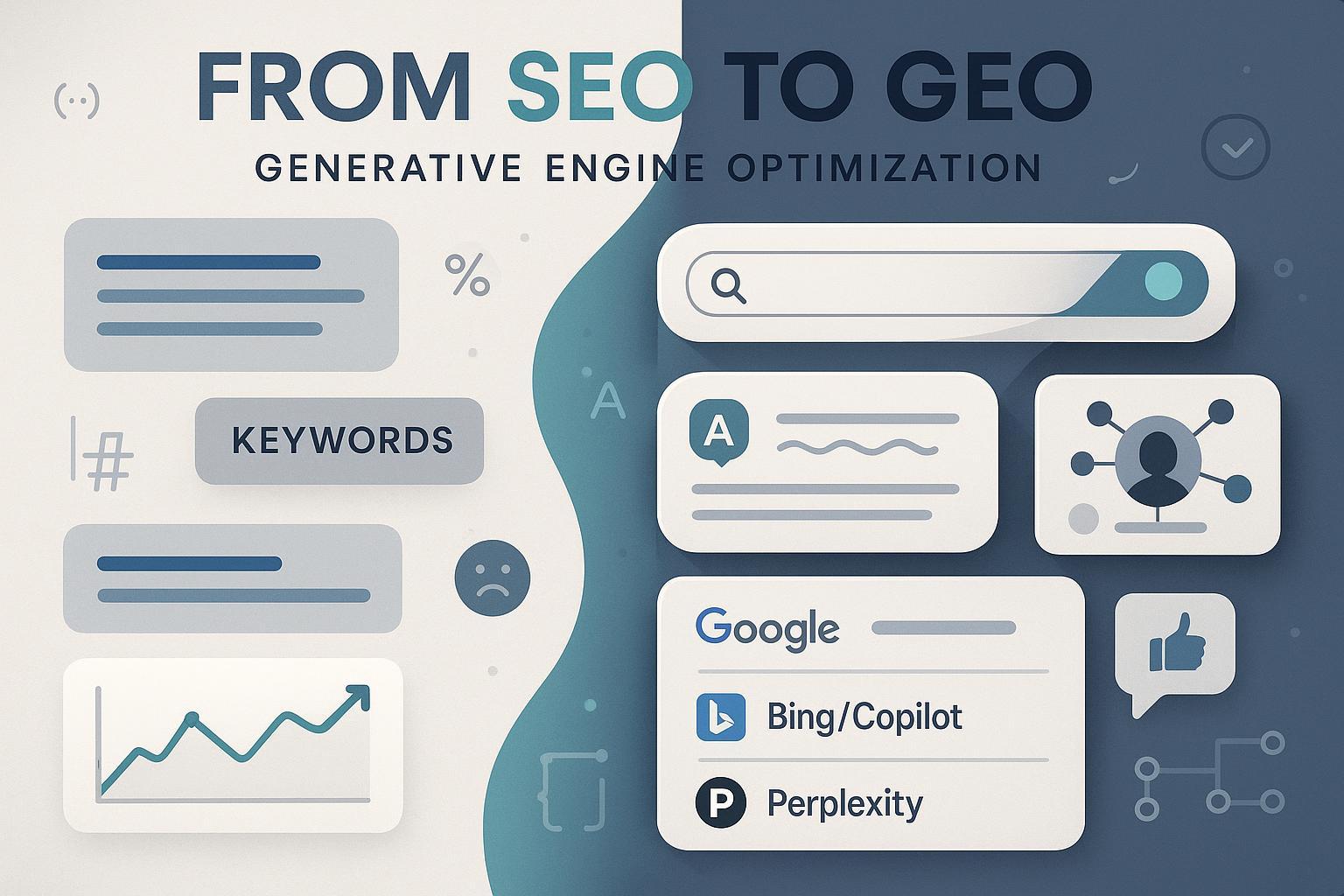
Updated on: 2025-10-10
The ground under search is shifting from lists of blue links to AI-generated answers that cite sources. In May 2024, Google began rolling out AI Overviews in the U.S., with broader expansion later that year; by October 2024 Google announced reach to 100+ countries and emphasized the scale of monthly users, underscoring the mainstreaming of AI answers in Search, per the company’s posts on The Keyword in May 2024 and October 2024. See details in Google’s own announcements: Google The Keyword — Generative AI in Search (May 2024) and Google The Keyword — AI Overviews in more places (Oct 2024).
As this generation of engines matures, “visibility” means being selected and cited as a trustworthy source in an AI answer—across Google, Bing/Copilot, and Perplexity—not just ranking in the classic top 10.
What GEO is (and isn’t)
Generative Engine Optimization (GEO) is the practice of shaping your entities, evidence, and content so AI answer engines can confidently cite you in their responses. It complements, not replaces, classic SEO. A clear definition that mirrors practitioner usage comes from Search Engine Land’s 2024 explainer, which frames GEO as optimizing content for AI-driven engines like ChatGPT, Perplexity, Gemini, Copilot, and Google AI Overviews; see Search Engine Land — What is Generative Engine Optimization? (July 2024).
Why 2025? Because AI answers are materially changing where attention flows. In April 2025, Ahrefs reported that queries with AI Overviews correlated with meaningfully lower clickthrough to the top organic result over a year-long window, illustrating how answer units can siphon clicks; see Ahrefs — AI Overviews reduce clicks (Apr 2025).
Platform realities you need to plan for
-
- Placement and prevalence: AI Overviews commonly appear above organic results and can cite beyond traditional top-10 pages, according to multi-month studies summarized by SE Ranking in mid-2025; see SE Ranking — AI Overviews explained (July 2025). Officially, Google confirmed U.S. launch timing (May 2024) and 100+ country expansion (Oct 2024) in the posts cited earlier.
- Implication: Authority still matters, but engines extract and recombine “answer-worthy” fragments. Your job is to make accurate, attributable pieces easy to parse and cite.
-
Microsoft Bing/Copilot Search
- Experience and citations: Microsoft introduced Copilot Search as a hybrid of traditional and generative search with cited sources in April 2025; see Bing Blog — Introducing Copilot Search in Bing (Apr 2025).
- Publisher guidance: Microsoft’s official advertising team published 2025 guidance on how to structure content so it’s parsable and suitable for inclusion in AI search answers; see Microsoft Advertising — Optimizing your content for inclusion in AI search answers (Oct 2025).
-
Perplexity
- Scale and behavior: Perplexity’s CEO stated the product processed 780 million search queries in May 2025 with rapid month-over-month growth, highlighting rising consumer adoption and prominent inline citations in answers; see Perplexity — CEO statement on 780M queries (June 2025).
- Implication: Clear, concise answer blocks supported by credible links are especially likely to be featured.
What works now: An evidence-aligned GEO playbook
- Clarify who you are (Organization, People, Products), where you’re authoritative, and how facts are verified.
- Maintain consistent entity names, bios, and profiles; reinforce with appropriate schema (Organization, Person, Product, FAQ, HowTo) and clean, fast pages. This is classic technical SEO extended for LLM parsing.
- From keywords to questions
- Build briefs from real question clusters: customer support logs, People Also Ask, forum threads, and internal search. Write tight, direct answers near the top of the page, with definitions and “TL;DR” summaries.
- Citation-friendly formatting (aligned to Microsoft 2025 guidance)
- Treat your pages as structured answer sources. Microsoft’s October 2025 guidance stresses that AI assistants parse content into usable pieces and assemble answers from those fragments; therefore, make your content “snippable” with scannable headings, short paragraphs, bullet lists, and explicit definitions. See Microsoft Advertising — inclusion in AI search answers (Oct 2025).
- Evidence pages and trust signals
- Publish methodologically sound data posts, glossaries, FAQs, and “how it works” explainers. Keep visible update dates and use inline citations to primary sources (standards bodies, official docs, reputable studies). This increases your “safe-to-cite” profile.
- Technical readiness
- Ensure crawlability, indexation, fast performance, and clean HTML. Use canonicalization to prevent duplication and structured data to disambiguate entities. These steps support both classic rankings and AI parsing.
Monitoring and measurement: From anecdotes to an operating system
What you don’t monitor, you can’t improve. Build a recurring cadence around these GEO KPIs:
- Citation frequency by engine (Google AI Overviews, Copilot, Perplexity) and by query cluster
- Brand mention accuracy and sentiment in AI answers
- Share of voice versus key competitors within answer units
- AI referrals you can attribute (e.g., Perplexity or Bing/Copilot traffic via identifiable referrers)
- Time-to-correction for factual errors or misleading portrayals
A practical workflow teams can run biweekly:
- Define tracked query clusters by intent (informational, comparison, troubleshooting, pricing).
- Manually validate answer behaviors across engines (screenshots + notes).
- Use monitoring tools to capture citations/mentions and sentiment trends over time; flag inaccuracies for remediation.
- Update the source pages (facts, formatting, schema) and log changes with timestamps.
- Re-verify answers after recrawl cycles and model/product updates.
Example tool in the stack: You can use Geneo to track cross-engine AI citations and brand mentions, review sentiment in generated answers, and maintain a history of query-level changes to guide content updates. Disclosure: Geneo is our product.
To see how cross-engine visibility reporting looks in practice, review this concise example report: AI search visibility analysis for “Authentic Belizean Island Vacation Experience”. It illustrates mentions, sentiment, and linkbacks across engines—exactly the artifacts you need for executive reporting and iteration.
Build your “citation surface area” beyond your website
LLMs and answer engines triangulate across many signals. Expand credible touchpoints that are safe to cite:
- Documentation and explainer hubs: Consolidate definitions, methods, and FAQs with clear update stamps.
- Data-backed posts: Publish analyses with transparent methods and link to primary data.
- Community participation: High-signal threads in expert forums (including Reddit, where niche communities often surface in AI answers) can seed citations when they demonstrate expertise and link to authoritative sources. For practical tactics, see our field guide on driving AI search citations through Reddit communities.
- Third-party profiles: Keep authoritative listings (e.g., Wikidata, industry directories) accurate to reduce entity ambiguity.
Troubleshooting and governance
- If you’re omitted where you should be cited: Compare your page’s “snippability” and evidence depth against sources that are being cited. Add concise answer blocks, strengthen entity markup, and ensure your claims are externally verifiable.
- If you’re misrepresented: Publish an authoritative correction page, add explicit facts to the most visible related pages, and request re-evaluation by updating timestamps and internal links. Track “time-to-correction” as a KPI.
- If sentiment trends negative: Diagnose root causes (e.g., outdated pricing or deprecated features). Provide updated, transparent documentation and consider a short Q&A or FAQ that addresses misconceptions directly.
- Governance: Maintain a change-log for all fact updates and model-facing pages. Align legal/PR for rapid review when accuracy issues surface in high-visibility queries.
Forward view: GEO rolls up to brand and revenue
GEO is not a short-term hack; it’s an operating layer across content, technical SEO, PR, and analytics. The engines will keep evolving—Microsoft’s Copilot is explicitly designed to blend generative and traditional results with citations (April 2025), while Google continues broadening AI Overviews (May and Oct 2024 posts), and Perplexity’s query volume surged by mid-2025. If your brand isn’t building entity clarity, citation-ready content, and a monitoring loop, you’re betting your funnel on hope.
—
Mini change-log
- 2025-10-10: Added Microsoft Advertising’s Oct 2025 guidance on inclusion in AI search answers; refreshed monitoring workflow; updated Perplexity scale reference.
If you’re formalizing GEO measurement, consider a pilot with your top three intent clusters and stand up weekly monitoring. When you’re ready to operationalize, evaluate whether a monitoring platform like Geneo can compress manual effort and improve visibility across engines.
External sources cited in text
- Google The Keyword — Generative AI in Search (May 2024); Google The Keyword — AI Overviews in more places (Oct 2024).
- Ahrefs — AI Overviews reduce clicks (Apr 2025).
- SE Ranking — AI Overviews explained (July 2025).
- Bing Blog — Introducing Copilot Search in Bing (Apr 2025).
- Microsoft Advertising — Optimizing your content for inclusion in AI search answers (Oct 2025).
- Perplexity — CEO statement on 780M queries (June 2025).


